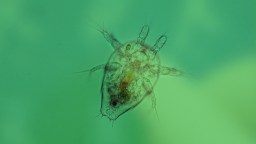Journalist and author Walter Isaacson’s latest book chronicles the discovery of the groundbreaking technology that enabled gene editing. Jennifer Doudna was a young scientist captivated by RNA’s potential, while her contemporaries focused on DNA and the Human Genome Project. In her research, Doudna discovered how to repurpose CRISPR, a system used by bacteria to fight viruses, to edit gene sequences — a discovery that could change the future of the entire human species.
The perils of gene-editing technology loom large as scientists grapple with its ethical implications. Doudna herself has had nightmares about the potential misuse of CRISPR, fearing its capacity to aid eugenics. Isaacson urges a focus on using CRISPR to address pressing medical needs like sickle cell anemia, cystic fibrosis, and Huntington’s disease while avoiding a dystopian future where the wealthy can buy better genes for their children.
Patients like Victoria Gray, who was successfully treated with CRISPR for sickle cell disease in 2022, are already benefiting from the technology. For Isaacson, the story of Doudna and CRISPR is a testament to the awe-inspiring potential of human innovation when approached with curiosity and caution.
Isaacson: Early on, I thought, I'm gonna write a book about the great adventure of understanding gene editing. You know, I've written about the physics revolution that dominated the first half of the 20th century. And then of course I was deeply immersed in the digital revolution, which was the second half of the 20th century. But what happened in the past few years is we've found easy to reprogram tools that will allow us to edit our genes. Man, that's going to be 10 times more impactful than the digital revolution was.
So whenever you have a wonderful tale of adventure, it's always good to have one central character that helps bring the narrative along. And for me, Jennifer Doudna was perfect for that. When she was a young scientist and graduate student in the 1990s, all the men in science and biology, they were all running after the soccer ball, focusing on DNA and the human genome project. But she became fascinated with RNA. And it turns out that's a molecule that actually does more work.
She was able to discover how RNA could replicate itself, which gets to one of the big questions in life. Which is, how did life begin on the planet? Then she discovered how to take this tool that bacteria use to fight viruses, called CRISPR, and repurpose it by reprogramming the RNA to edit our own human genes. So all of these things come out of Jennifer's work in understanding the structure of RNA. CRISPR is a system that bacteria have been using for a billion years. And they learned a simple trick. If a virus attacks them, they take a mugshot, and they wrap it into their own bacterial code. If the virus ever attacks them again, they got that mugshot, and they take a guide, and take a pair of scissors known as an enzyme, and they chop up the virus.
But what Jennifer Doudna and Emmanuelle Charpentier and others did, was figure out, we can repurpose this so that the guide doesn't just chop up the viruses attacking bacteria, we'll reprogram it so that it cuts our own DNA wherever we tell it to. And thus, it becomes a tool to edit our genes. Right after Jennifer invented this technology, she had a nightmare. And it's somebody who wanted to learn how to use the technology. She walks into the room, and in the nightmare, it's Hitler. So she starts gathering scientists to answer your question, which is, what are the perils we need to worry about?
Now, the perils to me, are that we go too fast down the road and make inheritable edits in the human genome in a way that affects our whole species. And I think that's a ethical line we have to pause and be very careful before we cross. We know ways to use this in individual patients for deeply important medical needs, like sickle cell, cystic fibrosis, Huntington's, Tay-Sachs, muscular dystrophy. I think we should focus on those, and be careful about doing things that would allow rich people to buy better genes for their children. Because if people could go to a genetic supermarket, and say, what color eyes, what color hair, what height, I think we would harm the human species.
You know, we think of these as futuristic technologies, but we've already had CRISPR be used for a real person, Victoria Gray. They use CRISPR technology to take her stem cells, edit them, reinsert them into her body, so that she is now making healthy blood cells. We're already using this to help the human species. So all these things are about the unbelievable excitement of the journey of science. And that open inquiry, that ability to approach things with an open mind, we sometimes lose that. We go into our ideological corners and we have knee jerk reactions to things without saying, "Show me the evidence." So one of the things I wish people would think about, is it's not just about science, it's about the scientific method. Which means you're open to changing your mind.





